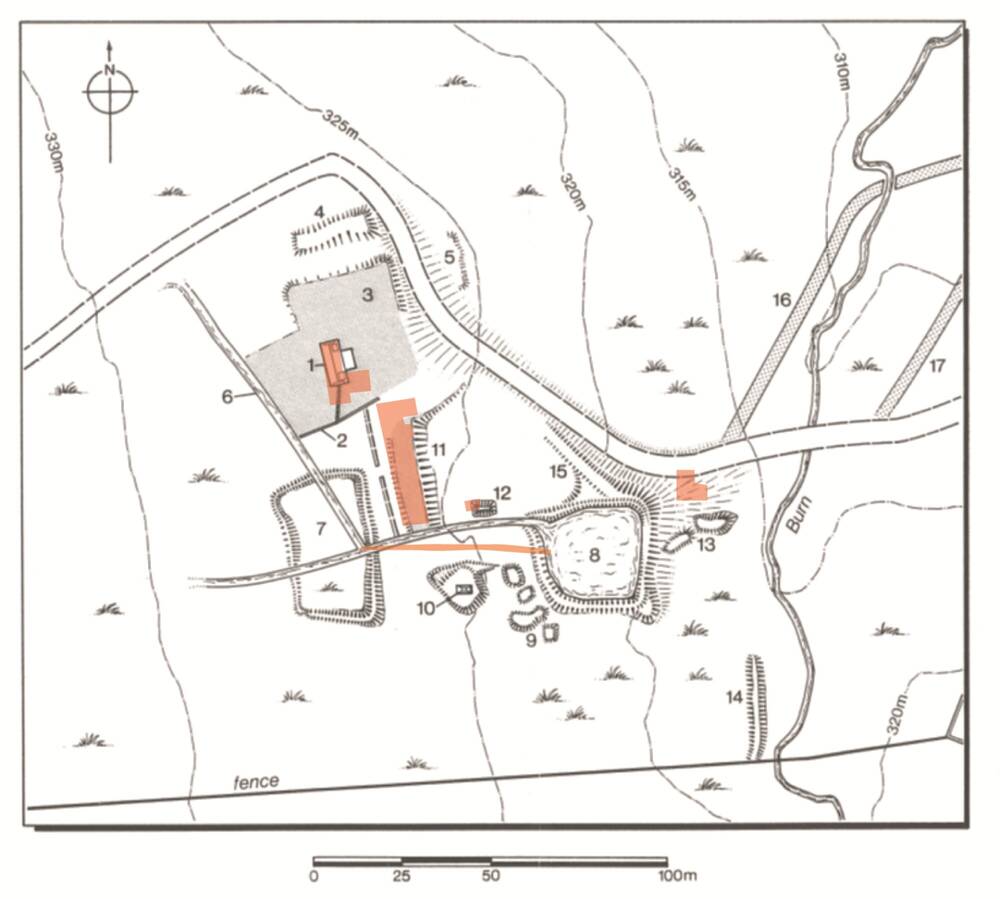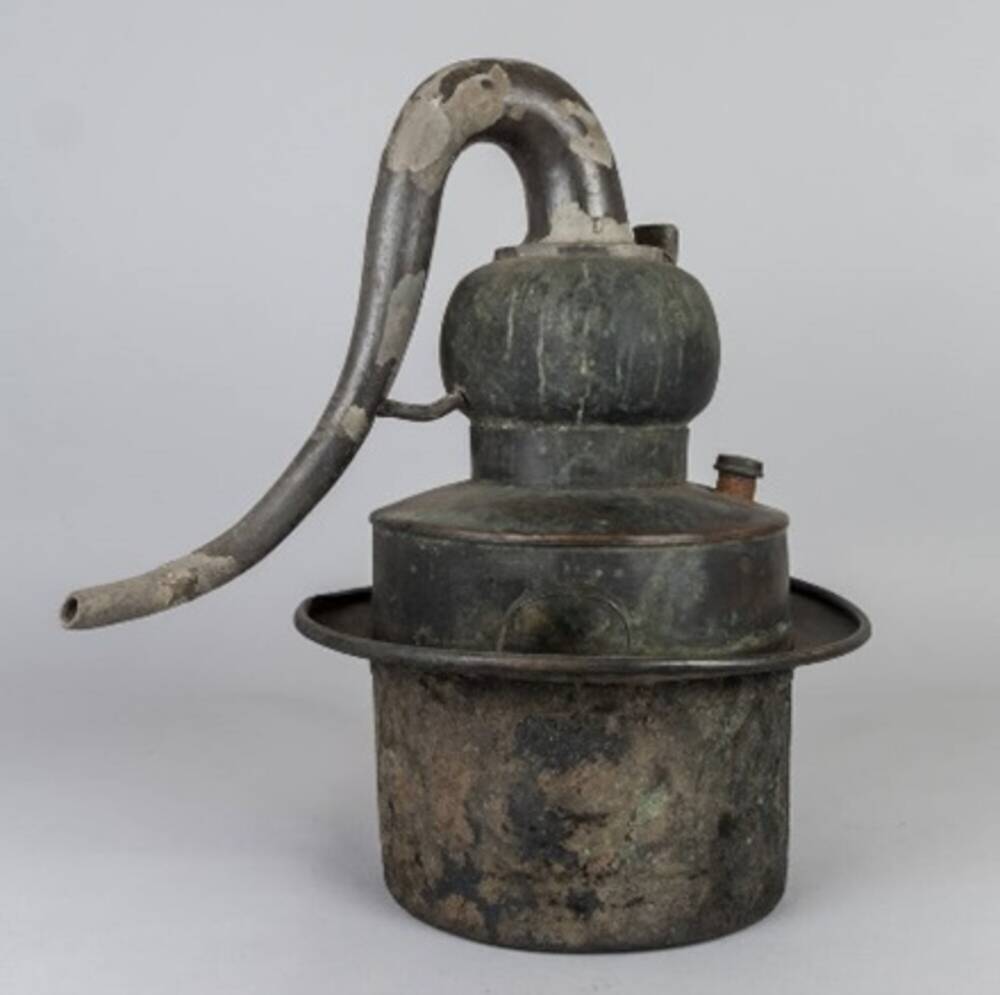As part of the Pioneering Spirit whisky project, in partnership with The Glenlivet, NTS have been conducting desk-based studies of whisky-related artefacts in Trust collections and archive information on The Glenlivet old distillery site.
The site of The Glenlivet old distillery is located on Upper Drumin farm, just over half a mile upslope and south-west of the current distillery at Minmore. The former site is where George Smith, founder of The Glenlivet, set up the first licenced distillery in the area in 1824 – a game-changing moment that set a new direction of travel for the industry. While the historical background to the old distillery is well known, the physical remains at the site – the archaeological remains – are less well understood. The site, which is owned by the Crown Estate and sits beside an offshoot of the Speyside Way footpath, was surveyed in 1994 by a young Derek Alexander (before he joined the National Trust for Scotland!).


A review of the 1994 survey and the Ordnance Survey maps, now available online, shows how the buildings have disappeared over time. The 25 inch OS map, published in 1869, includes the outline of four buildings, 11 years after whisky production had moved to the new site down the hill at Minmore. The site is therefore labelled as an ‘Old Distillery’ and the reservoirs are marked as ‘Old Mill Dams’. The only other named feature is the ‘Chimney’, which is shown as an isolated rectangular block midway between the two dams. This chimney seems likely to have been attached to both the copper stills and to the distillery ‘copper’, the boiler which would have heated the water for the brewing process (Alan Winchester pers comm). This building must have been completely demolished in 1858 to move the equipment down to the new site, leaving only the chimney standing. The Chivas Brothers archives contain a number of black and white photographs of the chimney and parts of the buildings.
The chimney formed the southern gable of a building. The broken stones visible on the west side of the chimney stack indicate that a thinner wall protruded on this side. A dark rectangular horizontal void appears to mark the upper limit of this wall, at a quarter of the height of the chimney. Halfway up the chimney there’s a shoulder, with a slight pitch topped with slates. Above this shoulder the chimney narrows in length. The third quarter of the chimney has two horizontal bands across the stone courses, which appear to be iron bands used to hold this portion of the chimney together. The uppermost quarter of the chimney is constructed of brick and may mark a deliberate heightening of the original stone stack.
The copper still was probably removed and reused in the new distillery, but not as the main still, as a description of the 1859 distillery says both these were new. In larger distilleries there were usually two different stills as part of the process – the first was the larger of the two, called the wash still, which was used for the first distilling of the fermented liquid (a type of ale), known as wash. A second, sometimes smaller, still was then used to distil the product from the first still, and this was often called the low wines still. In the 1859 distillery the new stills were 2,000 and 1,200 gallons in capacity. The copper still removed from the 1824 distillery may therefore have been reworked and made into copper piping or another piece of equipment such as the spirit safe.
In contrast to the fixed construction of licenced distilleries, illicit stills had to be small enough to be portable and hideable. While we were investigating the documentary records about The Glenlivet old distillery, we also examined whisky-related artefacts in the Trust collections. One of the stand-out pieces is the copper still from Cortachy, from the Angus Folk Museum collection, and set to be part of a new display at the House of Dun. This still has a volume of about 2 gallons – 1,000 times smaller than the wash still in The Glenlivet distillery of 1859.


The body of the Cortachy still is a flat-bottomed cylinder with a circular reinforced rim with handles, two thirds of the way up, which would have allowed it to be inserted into a brick-built oven. The handles were also useful in that it could be moved even when still hot. There’s a capped inlet on the upper surface of the base cylinder, where a second shorter and smaller cylinder supports the bulbous head of the still, which seems to have been welded on. The head, like the rest of the still body, appears to be made from copper and is about half the diameter of the body. From the top of the head, an S-shaped ‘swan neck’ curves up and then down, tapering in width as it goes. The white colour of the corrosion spots on this element suggest that it’s made of different metal (tin or pewter?) and is likely to have been cast. As part of the initial research we have produced a 3D model of the Cortachy still.
A number of questions could be answered by detailed examination and recording of this still, including chemical analyses of the metals used, and the size and capacity of the still. Given that this still was made to sit in a brick-built stove, it must have been used inside a building and was not the sort of pot still to be found in a hidden bothy in the hills. It is, however, too small to have been used in a large commercial operation, even of the size of The Glenlivet old distillery. It may have been used inside an outhouse with an in situ brick water heater and then taken out and hidden when not required. The date of the still is not clear, but closer examination and comparison with other stills suggests that it’s probably 20th century.
Although coronavirus has limited planned fieldwork associated with the Pioneering Spirit project, it’s allowed us to focus on desk-based research which has highlighted a host of questions about both The Glenlivet old distillery site and items in the Trust collections. As we begin to emerge from lockdown, we’re looking forward to returning to our fieldwork, unearthing new narratives and expanding our understanding of the evolution of Scotch whisky.
Read full article Written by Derek Alexander, Head of Archaeology, and Daniel Rhodes, Archaeologist


